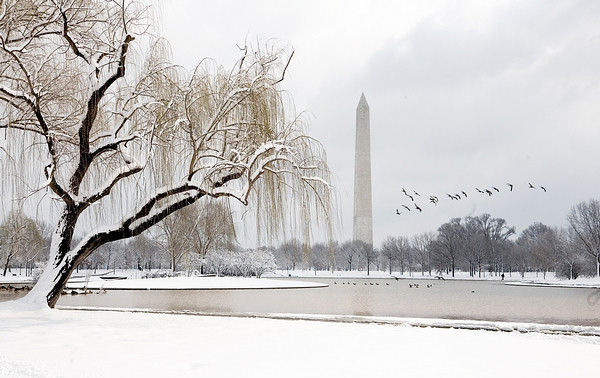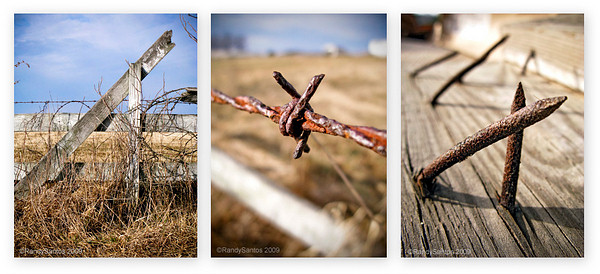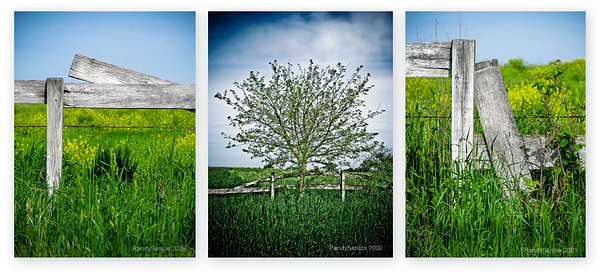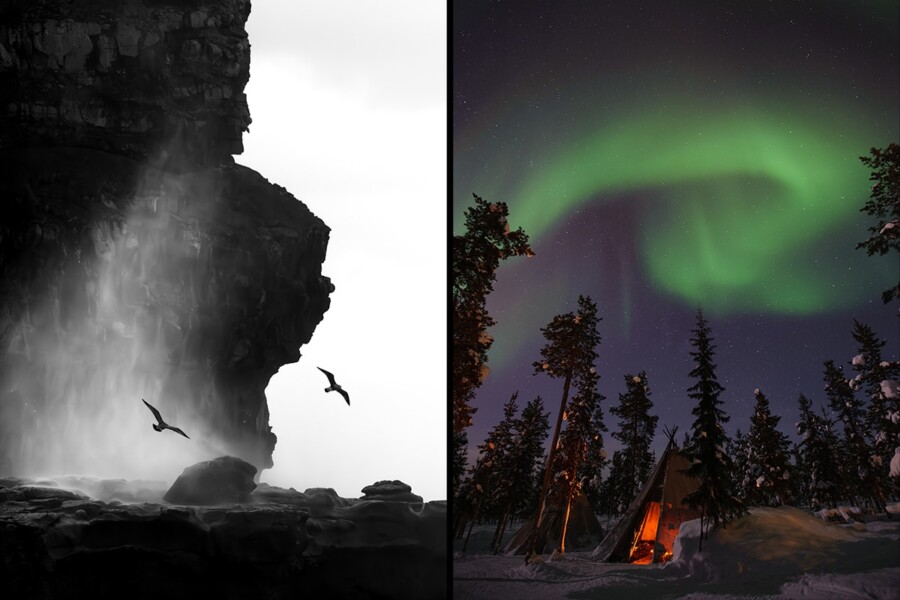Share
Building a “Monumental” Photo Business: How Randy Santos Succeeds Selling Stock Photos
Randy Santos specializes in Washington DC stock photography. Randy does not license his images through stock agencies and makes a very healthy livi...

Randy Santos specializes in Washington DC stock photography. Randy does not license his images through stock agencies and makes a very healthy living selling directly to clients. His images appear in coffee table books, calendars, hotels and restaurants, and corporate environments worldwide. We caught up with Randy to learn about how he succeeds in a highly competitive niche, and his approach to managing and marketing his photography business. We found Randy’s advice and experiences pretty inspiring.
Where did you learn photography? And what did you do before starting dcstockimages.com?
I’ve been shooting for a long long time – I started in high school but never had a formal photography education. I’m 100% self taught, and at times a little self conscious about that. But, I’m fortunate to have learned on a Canon FTB – when everything was completely manual and to be good, you needed to really learn the fundamentals of photography.
I’ve been blessed with an overstimulated, hyperactive brain. So I look around and think I see things differently – in terms of shape, light, patterns, and composition. The camera is a tool for capturing what I am seeing. This unique perspective has enabled me to (hopefully) become a good photographer. Lord knows what I’d do otherwise!

Photo by Randy Santos
I started shooting commercially at age 19 – when I talked my way into working for a well known commercial studio in DC. Pretty quickly, I went from being a reckless teenager to photographing Ronald Reagan weekly, dignitary visits, and Capitol Hill. This was really valuable experience for me – mostly because I was exposed to the old-time DC photographers, and from them I learned real world business operations, and how to deal with clients professionally. These lessons stuck with me and they’re a big part of how I do business today.

Photo by Randy Santos
What led you to start dcstockimages.com?
I started my own business just over 20 years ago, initially focused strictly on local corporate and PR photography. I kept myself busy doing what I love, capturing creative images around Washington DC. But, it was hard to market and sell this stuff before the Internet came along. About four years ago, I had some DC pictures on one of my websites, and got a call from an art buyer, who loved my photos because they featured DC but shot at much more interesting angles than typical DC postcard photos. They wanted to see more, so I shared the body of work I’d been developing over time. This turned into a major hotel décor project – with my photos printed and hung throughout the lobby and guestrooms. The revenue I generated was a real eye opener, and I realized a way to turn this experience into an opportunity.
After this project, I talked with the art buyer some more, keyed in on why she felt my images were different, and learned more about her needs. Then I started listening to more art buyers, understood their own challenges, and saw the opportunity for a specialized business. So I gathered up the images I had taken of DC, learned a little bit about writing code (and I am as low tech as they come) and bought every domain I could think of related to DC images http://dcstockimages.com/, and started getting my images out there. Thanks to the web and a few traits I believe are critical for success, this thing blossomed and bloomed like you wouldn’t believe.

Photo by Randy Santos
So, what traits are necessary to succeed, especially selling stock photos independently?
- Listen. Talk with your potential customers, listen for the void, and then fill it. You’d think that with so many pictures of DC attractions already out there, I wouldn’t have much chance for success, but I contacted as many art buyers as possible, learned what they were tired of, and how my particular style of imagery would appeal to them. I listened to how the market works and their frustrations with content delivery. Now, the art buyer is in my head whenever I’m doing a shoot – telling me to leave space for copy, or go heavy on the verticals, or take a few shots that can make a great 2-page spread.
- Show the client you understand their perspective. Art buyers certainly care about quality images – but their favorite photographers also provide assurance and convenience. They need to know that you’ll deliver the product without hassles & complications. For example, the resolution will be usable for their specific project as promised, no surprises regarding releases, etc.
- Specialize and build a full collection. My work may not be groundbreaking, revolutionary, or even the best photography in the world. But, there is value in that this is well-defined, well-organized, searchable collection of images. Buyers can satisfy their needs in one location. People say, “how many different pictures can there be of the Capitol building?” But, you never know what angle, or time of day, or season, or space needs that someone may have for that specific subject, so it pays to make the selection large. Having a niche also gives me focus and direction. I know how to market my work and who I’m marketing it to at all times. It also helps me zero in on a tighter set of keyword search terms when thinking about SEO for my website.
- Differentiate yourself. Set yourself apart from the masses. Clients need to remember you for something special. Provide the content breadth, or quality photos, or the best possible service, or simply speak their language – and this all adds up to value. And when you are providing value, you can charge a premium. You build relationships and long term clients. And they refer you to other people, which is the best advertising in the world.
- Learn and practice good business. Professionalism is essential in every aspect of the how you conduct business. Understand contracts and licensing. Follow-up and deliver. Hold firm on your fees — don’t cut your rates and give your rights away. You will be respected by your clients for doing so. Realize the value of what you create
- Work really hard on your website and SEO. Sure, you want to be creative and get personal fulfillment, but you need to get your work out there in a way that buyers will find it. Dedicate the time to strong keywording and metadata. If you are not on page 1 or 2 of Google, you don’t exist.

Photo by Randy Santos
Who are your clients?
I have a broad range. My stock is used in ways I never would have thought imaginable. I’ve had some great success with hotel and corporate environment décor. Differentiating myself has enabled me to be successful in this area. Some hotels where you can see my work include the Sheraton Washington, Wardman Park Hotel, JW Marriott, and Shoreham Hotel. These guys – worth noting – have no use for the bottom of the barrel quality $1 download. I also work frequently with design agencies, web design firms, art buying agencies, book and calendar publishers, retail stores.
I’m told that my pictures are displayed in the lobby at the US State Department, 9 feet tall, printed in plexiglass and suspended on panels. But, I’ve never seen it because I don’t have security clearance!
Another one of my favorites is at the restaurant Hudsons in DC. They’re using my photo of the Washington cherry blossoms – uniquely backlit – printed on transparencies and displayed as triptychs on 5 foot panels.

Photo by Randy Santos
Do you handle assignments/ commissioned work or strictly stock?
Until a few years ago, I did only assignment work. Now, I just license my images. I want to create, market, distribute and license images on my own schedule. Everything I license is rights managed. In my opinion, royalty free licensing is the devil.
Describe a typical client interaction.
I get probably 20 to 25 fresh leads from my website every week, thanks to strong SEO. (Randy appears on page one for just about every search term relevant to Washington DC images.) Of these, about two or three per month turn into projects of significant size (rather than one-off image sales).
One of the ways I differentiate myself is to provide a high level of personal interaction with the client. I look for ways to help make people’s projects run smoothly. So, I work together with them in many aspects, like talking through image selection and production considerations. It creates a personal bond that people really respond well too, especially when they’re used to dealing with big agency sales reps.
I usually look for opportunities to expand the scope of images they are licensing from me. I do this by sharing more images if I know there’s a need, and by using PhotoShelter’s tools like lightboxes to help facilitate their project and make their lives easier. If I can make them look good for their client or boss, they generally want to do more with me.
For example, I just wrapped up a deal for a coffee table book. They approached me via my website, and were interested in five images to supplement a coffee table book. I listened to their needs and created a PhotoShelter lightbox that included a lot more images that I knew they could use. Then I showed them how each of the four members of their team could add/ subtract/ sort and comment via the lightbox. This was the lightbulb moment for them, when they realized it would be very easy to work with me. From here, they decided to do the whole project with my images — 100 of my images. By virtue of a breadth of content and knowing how to maximize the tools available to me, I was able to expand the project far beyond the initial request.

Photo by Randy Santos
How do you market yourself and make sure people hear about you?
I have two marketing methods that I rely on heavily – SEO for inbound marketing and email campaigns for outbound marketing.
To me, Google is really the greatest thing on earth. It really changed my business. To make the most of it, I needed to learn how to build and organize galleries online, use keywords liberally, and make them successfully searchable to be found by art buyers. I use Google Analytics to study the keywords people are using to find me. I look at ways the art buyers string the words together. For example, not many are buyers search for “pictures” or “photos” but rather “images”. I work really hard to get the keywords right and get them strung together properly. I also experiment with strings of words I see driving buyer traffic, like adding “best” or “unique” or “high res” or “tiffs”.
I have also built my own buyer database of anyone that’s ever contacted me, and anyone I’ve ever worked with. To me, my list is a goldmine. I regularly send email postcards to stay on their radar. Every time, I get a handful of replies, either asking for more of that particular image or other stuff I’m working on. When I shoot new images, I put a PhotoShelter gallery together, send it off to clients I know buy a lot of photography. You never know what’s going to stick. I just did a shoot of schooner ships on the Chesapeake. An old client called back and wanted them for a Boston hotel project totaling several thousand dollars. I once furnished a whole hotel in Portsmouth, NH with nautical photos I took in DC! I don’t use any particular email service – just send these emails directly from my own personal email.
I also blog regularly. I originally thought about my blog as an additional creative outlet – a vehicle to share my other creative work from running around with my Canon G9. And now I’ve starting using it for SEO too, and people see my work and respond positively. I’m furnishing photos for a major DC hospital with DC themed stuff, and they decided to license images for another floor using Americana images they found on my blog.
 Photo by Randy Santos
Photo by Randy Santos
Photo by Randy Santos
How has microstock impacted your business?
It has not changed how I operate, but maybe has eaten into some of the single image licenses I sell from time to time. I still focus on the large scale projects at the top of the market. I always ask a new client about their budget. When people indicate they’re looking for microstock – $1 or $20 downloads – I tell them to go ahead and proceed with it. My work is something different. Quite often, buyers come back to me when their dollar downloads won’t suffice in production.
To other photographers, I encourage you to really understand the value of your work. Photographers who ask for $1 for their images are making a statement – you’re satisfied shooting for the bottom of the market. Feel free. But I’d advise you to have more self esteem and shoot for the top of the market. There is a whole world of image buyers that don’t want microstock.
What features of PhotoShelter do you use most often, and why?
I use PhotoShelter to host my online galleries. I have a huge selection of Washington DC images, and PhotoShelter enables me to keep everything categorized, keyworded, captioned, and fully searchable. For SEO, PhotoShelter has been really helpful because it allows me to get as much keyword-rich text as I need on the page to have my work found by Google. Beyond the display and hosting, I try to look for new ways to use PhotoShelter to facilitate my clients’ projects. This is where the lightboxes are really handy. PhotoShelter is the key tool that helps me draw clients into my archive, make their lives easier, and entice them to expand their projects with me.
Where do you get your inspiration?
I don’t get a ton of inspiration from looking at other photographers. My inspiration tends to come from within. I have 3 childrens – one is severely disabled and another with autism – and I’m strongly motivated to succeed for them, and have a desire to run a business that affords me the time to spend with them. I shoot pictures constantly, almost to the point of obsession.
If you want to sustain yourself in this business you need to be a professional. Realize and understand the value of your work. Maintain good business practices. Don’t sign bad contracts, and don’t give your rights away.


